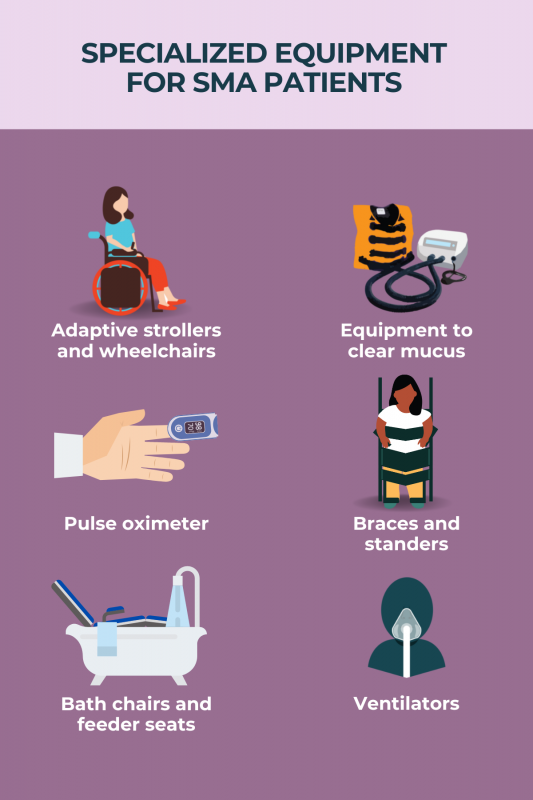 Discussion
Discussion
FAQs about specialized equipment for SMA
Certain equipment can directly reduce symptoms such as difficulty breathing and coughing, or difficulty swallowing. Other equipment is used to make daily life easier for those living with spinal muscular atrophy (SMA), aiding in mobility, standing, bathing, and travel.
The cost of spinal muscular atrophy or SMA treatment is usually high, and depending on the insurance plan, some companies may provide coverage for disease-modifying therapies, while others won’t. Patients or caregivers should talk to their healthcare team and insurance providers about access to SMA treatments. Due to the Affordable Care Act in the U.S., denials or restrictions in health insurance, or higher premium rates because of an existing condition such as SMA, are prohibited.
It depends on the level of disease severity. Type 0 is the severest disease type, and infants with this form of spinal muscular atrophy (SMA) generally do not survive past 6 months of age. Children diagnosed with type 1 who receive therapy can hit milestones including walking. Type 2 is a moderately severe form of SMA that causes developmental delays in sitting and walking, but with therapy, some children are able to walk. Those with juvenile SMA, or type 3, are able to walk as toddlers, but, without treatment, may lose the ability to walk independently. Disease-modifying therapy is used to maintain mobility. Type 4 is a form of SMA that develops in adulthood, and most adults do not lose the ability to walk.
Wheelchairs are mobile chairs, either manual or powered, for people with spinal muscular atrophy (SMA). Wheelchairs can be pushed by a caregiver or rolled by the person with SMA. Power chairs can be controlled with a joystick, a head array or chin control, and offer options such as postural realignment, and pressure relief. Some power chairs are fitted with “sip and puff” controls, which allow people who lack arm function to drive the chair with their breath.
Spinal muscular atrophy (SMA) can affect breathing, and respiratory care is essential for children with the disease. In children with SMA types 0, 1, and 2, breathing problems can be especially severe. Lung underdevelopment, reduced lung function, and difficulties in coughing and clearing lung secretions increase the risk of hypoventilation (or shallow breathing) and infection. However, most people with the milder forms of SMA — types 3 and 4 — may never experience breathing problems.
 Fact-checked by
Fact-checked by 





